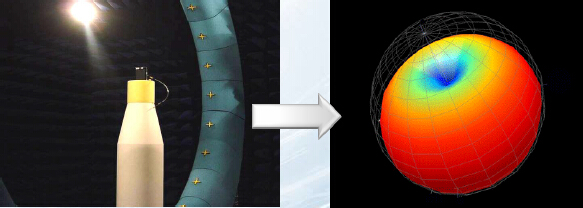About
Createtime:
The company focuses on complete solutions for OTA (Over The Air, generally referring to the performance of wireless complete machines) testing, in electromagnetic field measurement and simulation, radio frequency system and antenna design, mobile communication SISO testing, MIMO OTA testing, mechanical engineering, large-scale darkroom engineering, High-precision small OTA quick test system, radio frequency measurement components, EPP new rigid foam absorbing materials, information processing, software engineering and many other fields have unique theoretical accumulation and rich engineering experience. The products cover a variety of OTA test requirements and are applicable Used in various wireless communication terminals.
1. What is OTA?
For the field of communication testing, OTA refers to Over The Air, literally translated as "through the air." You know, when testing products, in addition to samples, you also need test equipment. In this process, we need a way to connect the sample to the test equipment. There are two common connection methods, one is the RF (Radio Frequency) radio frequency conduction test, which is what we usually call the wire to connect, if there is a test instrument, it is easier to achieve; the other is the OTA test, which means passing a test. Groups (transmitting antenna and receiving antenna) are connected without connecting any cables.

What products are generally involved in OTA testing?
Is it a bit similar to whether the computer at home can use a network cable to connect to the router or Wi-Fi. The connection methods are different, but they are all for the Internet? What products are generally involved in the OTA test?
It can be understood this way. OTA test is to evaluate the "air interface" performance of the device under test (the information transmission between different devices needs to be realized through the interface, and the electromagnetic wave propagates in the air, which is called "air interface"). One of the most important indicators: one is the total radiated power of the transmitter (Total Radiated Power), that is, the ability to "send out" information; the other is the receiver's Combined Total Isotropic Sensitivity (Combined Total Isotropic Sensitivity), that is, " The ability to receive information.
Because these indicators are directly related to product quality and user experience, many manufacturers of mobile phones and smart wearable products have previously imposed strict requirements on the wireless OTA performance of their products. With the wireless, intelligent, and diversified development of IoT products, and the gradual emphasis on customer experience, some non-mobile phone manufacturers have gradually put forward OTA performance requirements for their products.
2. Why is OTA testing required?
In everyone’s common sense, wired connections should be more stable and reliable than wireless connections, such as fixed-line telephones and Internet cables that generally do not have poor signal problems. Now that the RF conduction test is very mature, why do OTA tests need to be carried out? What are its advantages?
As we mentioned above, manufacturers of mobile phones and smart wearable devices have requirements for wireless OTA performance. These products have the same characteristics. They need to be in close contact with the human body. The actual use scenes are complex and diverse, and the components are highly integrated, and they are subject to radiation interference both inside and outside.
For RF conduction testing, as the integration of the device under test (DUT) has greatly increased, we cannot use cables to establish a physical connection between the device under test and the test equipment. More importantly, it cannot take into account the influence of antenna factors on the performance of the whole machine, it is difficult to completely verify the interference of different functional units within the whole machine, and it cannot evaluate the influence of the human body on the wireless performance of the product.
The OTA test can fully verify the impact of various factors from the chip to the antenna on the performance of the whole machine, simulate the transmission scenario of the product's wireless signal in the air, and integrate the product structure, internal radiation interference, antenna factors, chip transceiver algorithms, and even the human body. Taking such factors into consideration, it is a comprehensive test method to verify the air interface performance of wireless products in free space. It is very close to the actual use of the product. The test results obtained can also provide a more valuable basis and direction for product optimization. Especially in the field of 5G NR, it is inseparable from OTA testing.

